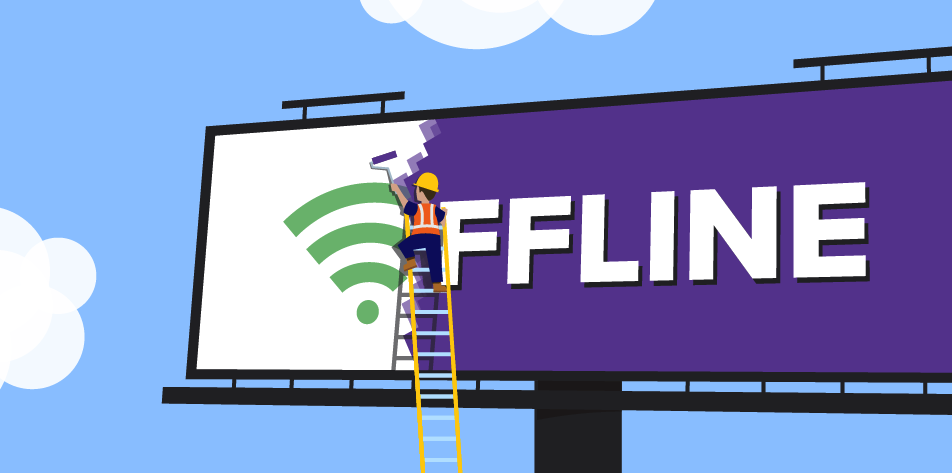
What Made You Invest In The Development Of A Web App?
Perhaps the development of a web app for your organisation was one part of a comprehensive strategy to optimise your UX, or maybe you wanted to meet the demands of your customers across every channel?
Whatever the reason, without moving at least part of your web app’s functionality offline, your web app will be vulnerable to dysfunctionality. For example, if your web app is exclusively hosted online, your customers will have no access in the event that their network connection fails leaving them frustrated and likely to move onto an offline alternative.
Moving your web app offline will ensure it provides a seamless service whenever and wherever your customers may find themselves.
Moving Your Web App Offline Can Help You Provide A Better Service To Your Customer
For some functions, your customer will need a direct online connection to your organisation and its services. Booking an appointment or sending a support query, for example, require real time inputs and responses from both ends before a resolution is made. However, a substantial portion of user activities do not require this kind of access.
One organisation that has adopted this offline approach to great effect is Tripit. The Tripit app builds an itinerary for travellers based upon their hotel bookings, flight arrangements, car hire, insurance cover, and a range of other information that a holidaymaker might need at any given moment. Since Tripit is a travel app, hosting its functionality exclusively online would be problematic, given the fact that the web app’s information could become unavailable when users need it the most.
To combat this, Tripit collates and stores a portion of its information on the user’s device. So whether a user has lost their data connection or not at a certain point, they can still access their trip information.
Tripit supports this functionality with additional features when the user is connected to the internet. But the core elements of the web app’s functionality are always accessible.
Another example of an organisation that uses offline functionality to complement their web app is Google. Google developed Gmail Offline, an app which allows mail to be read, responded to, searched and archived without network access. When an Internet connection is found, Gmail Offline will synchronise any queued actions and messages made whilst there wasn’t one.
For these reasons, it seems clear why moving your web app offline is essential to providing a great service for your customers.
Moving Offline Can Make Your Web App Perform Better
The benefits of moving offline are not limited to convenient access. This migration also guarantees that the web app is more responsive and functional across the board.
When your web app is solely hosted online, it must access the server every time it is used. This repeated access can place a lot of pressure on the server, slowing down its functionality.
Moving offline negates this issue by enabling access at all times. The web app will be able to recognise when it needs to access the server, and when it does not. The less often the web app requires access to the server, the smoother it will run and the better user experience it will be.
This means that a degree of modification is required when the web app is ported from online functionality to offline, or hybrid functionality. The web app must know which actions require server access (e.g. a request for real time information), and which do not.
Adopting a degree of native functionality, aka the in-built ability to operate independently from the internet, is achievable through the use of App Cache technology. Your web app needs to be programmed to send the right information. This will enable your web app to cache resources for future offline use, resulting in a slick and highly-responsive experience for your users.

